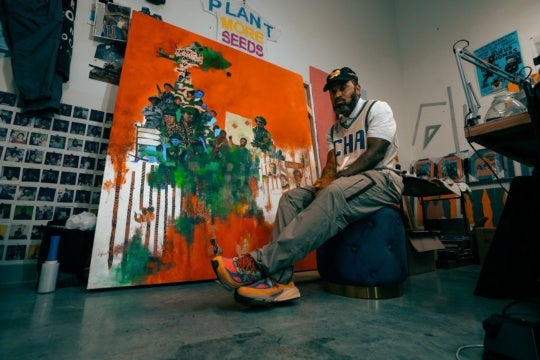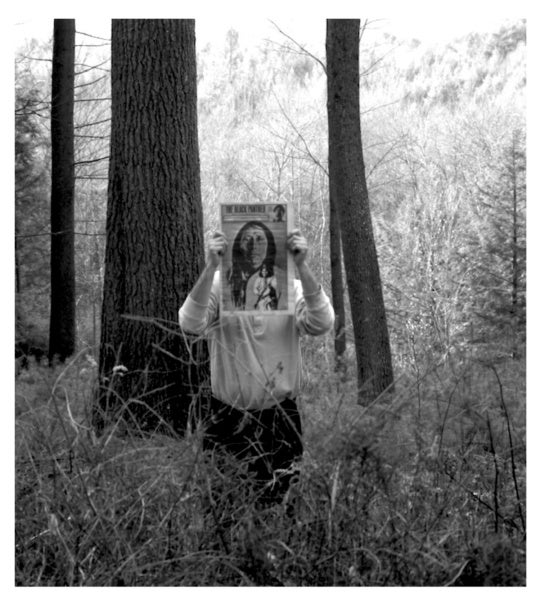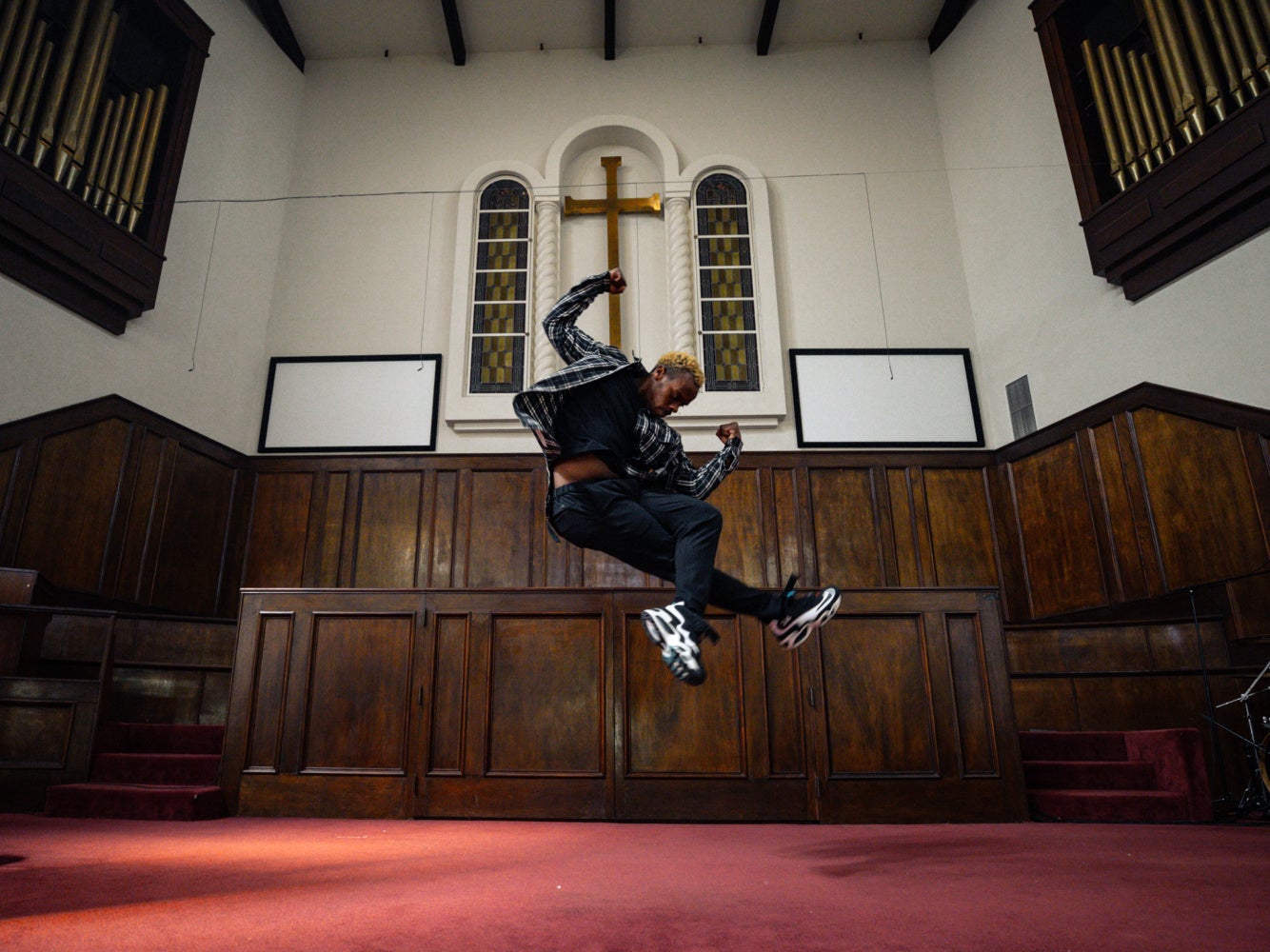
Sunlight casts its hazy rays on white columns. Red pew follows red pew. Unknown bodies sit stiff like backlit shadows, isolated from one another. It’s a place that feels familiar to me as a Southern native born into a largely Baptist family, but one that lacks the communion and community of the archetypal Black church. Dancer Lil Buck, known for his dynamic and moving performances rooted in Memphis jookin, walks solemnly down the sanctuary aisle and takes a seat on the second row, slumped over in anguish. This is how Nobody Knows, a short film directed and edited by David Javier and choreographed by Lil Buck, begins.
Damn. Lil Buck’s exhaustion is palpable as he rests his head on the pew in front of him, just like I did as a child when a two-hour early-morning service felt like eternity. But this tired is not that tired. This is a world-weariness, a forced depletion. “This is a mean world to try to live in,” the voice over says as the film starts. It’s the same thing that Pastor T.L. Barrett sings in “Nobody Knows,” the 1971 song that is the soundtrack for the film. “Nobody knows the trouble I’ve seen,” the voice over continues. “If only you could see what it takes for me to be, for us to be, to live with only a concept of free.”
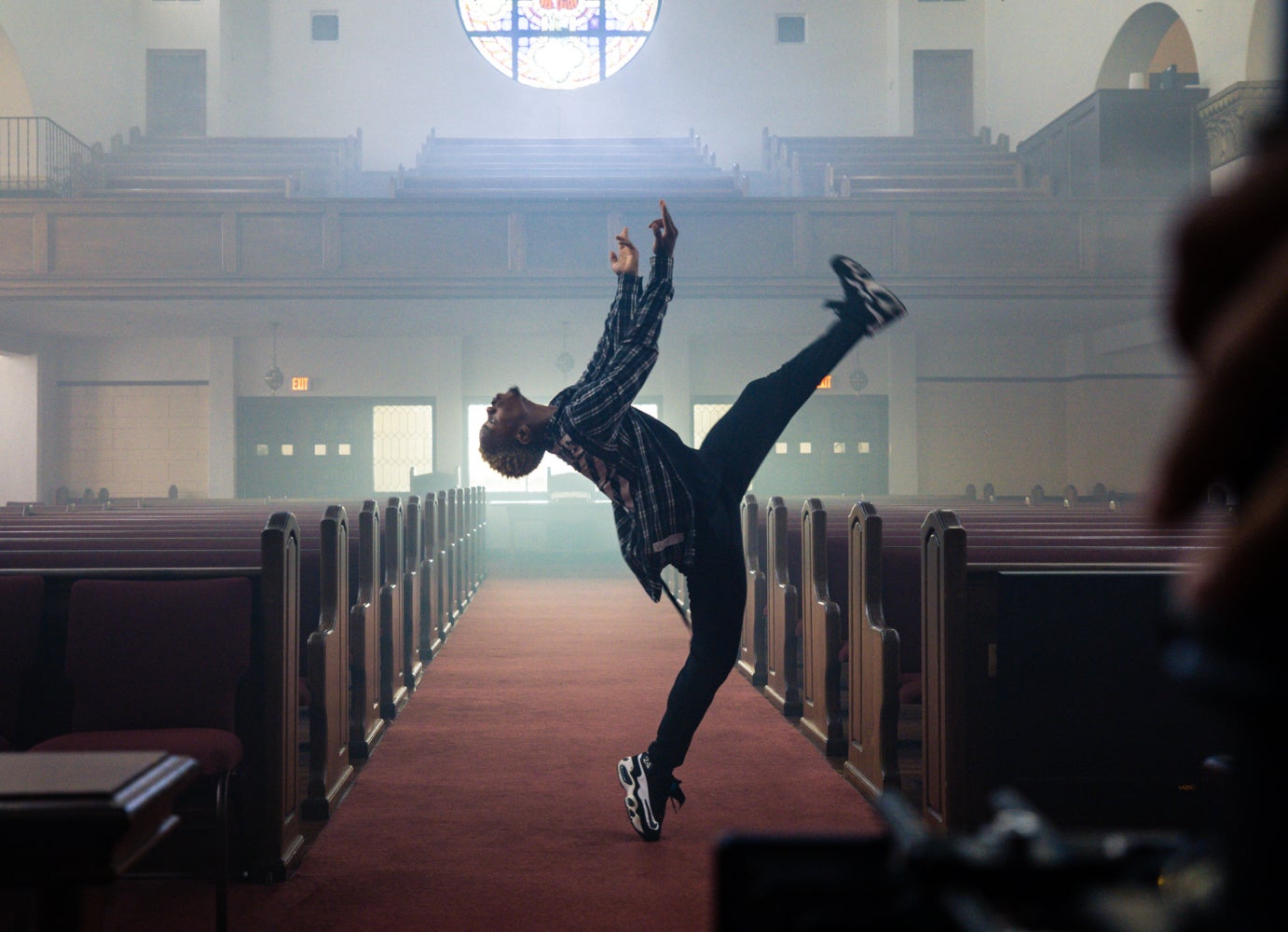
I replayed this line, trying to understand it. At first, I was skeptical. Is it a plea for sympathy from the hateful and willfully ignorant? Or is it a request for outsiders to understand our struggles without confining us to them? I begin to understand it as a thought experiment, an inquiry that requires no answer. The sentiment is not an appeal for pity or acceptance. It presents a hypothetical world where empathy wins, but it does not need that world to exist to move through suffering and toward healing.
The film’s music and narration claim that nobody can understand the trouble Lil Buck—or anyone facing hardships—has to deal with. At face value this could be taken to mean that struggle is an inescapable and lonely pit. That no one is in that pit with you, nor will anyone pull you out. The trajectory of this story could arc toward cynicism and hopelessness and end with dejection and failure. But less than a minute into the four-minute film, Lil Buck abruptly rises from his seat and begins dancing, encouraged by the same people who sat separate and cold just seconds before.
Throughout the rest of the film, we follow Lil Buck’s journey through Free City LA (the A.M.E. Zion church where “Nobody Knows” was filmed) as he transforms from all-black clothing to all white; as he moves from dance that exudes struggle and discovery to dance that feels ecstatic and confident; and as he draws a path toward a freedom that only he can define.
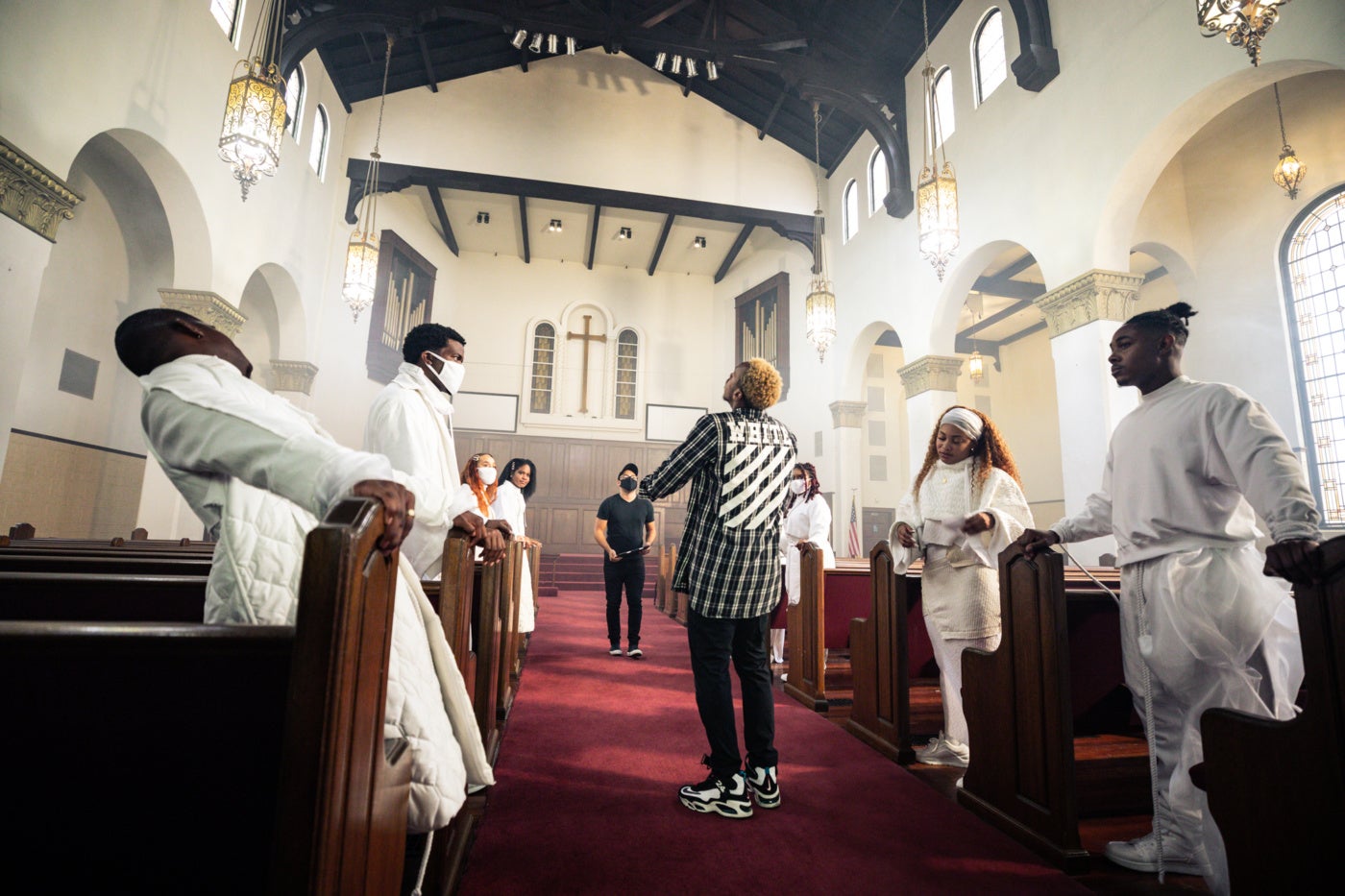
There’s a moment about halfway through the film when the choir members, dressed in all white, encircle Lil Buck, stretching their arms toward him as he reaches the peak of his transformation. In this moment, the conceit that “nobody knows” dissolves. Lil Buck emerges on his knees, alone in a barren room, kept company only by the sound of a crowd chanting, “No justice, no peace.” The air of loneliness, despondency, and pain that was pervasive at the beginning of the film is supplanted by an overwhelming aura of joy and fellowship.
As Lil Buck makes his way toward the altar, he not only acknowledges the members of the choir, but he also approaches them, smiling and shaking hands. The choir’s song and dance enliven Lil Buck, his movement reminiscent of praise dance as he approaches the stage in his flowing white garments. There is a marked shift from isolation to connection, from disjunction to unity. Lil Buck moves with childlike hopefulness, lifting his arms and spinning with unrestrained spirit. His dance in the film is always passionate and vulnerable. But by the end, his motion is no longer limited by struggle—it’s expansive, undulating, exalted.
Nobody knows. That’s what it can often feel like in the U.S., where we’ve largely been conditioned to value the individual over the collective; where we often live so densely that we can put an ear to a wall and play voyeur in someone else’s life but still feel alone and misunderstood; where we can earn someone’s empathy only to find out it’s performative, not tied to any compassionate action; where we form bubbles that could pop at a pin’s drop.
Despite having countless pathways for connection, irony emerges from our perpetual feelings of isolation and pessimism, and it’s even more apparent in times of compulsory separation. If there’s ever a time to feel like nobody knows what you’re going through, it’s during a pandemic when you’re home-bound, travel is massively restricted, physical touch is condemned, and contact with loved ones is limited. Concurrently, if there’s ever a time to feel like everyone knows what you’re going through, it’s when people all over the world are facing similar conditions and have the internet to share those feelings with a global audience. But the various challenges that come with being marginalized in the world have been protracted, and when the same problems have not been resolved for centuries, it can feel like nobody loves you, nobody cares about you, and nobody even sees you. Our personal difficulties can compound our feelings of adversity as an insurmountable and unfathomable burden.
In the description for the film, Lil Buck intimates his love for the church choir. He says that it got him through tough times, even helped keep him alive when he questioned whether his life was worth living. That isn’t my story. But even though my experiences in the church weren’t ones of love or even interest, the choirs’ songs found a way to worm themselves into my heart. A choir is unity in body and sound. And Black gospel is a knot on the long thread of Black song, a thread that includes the ring shout, spirituals, and work songs. No one has ever been completely alone in their struggle. Lil Buck’s passion for dance—which by his own admission was likely inspired by the church choir—is proof that many people, living and dead, know what we’re going through.
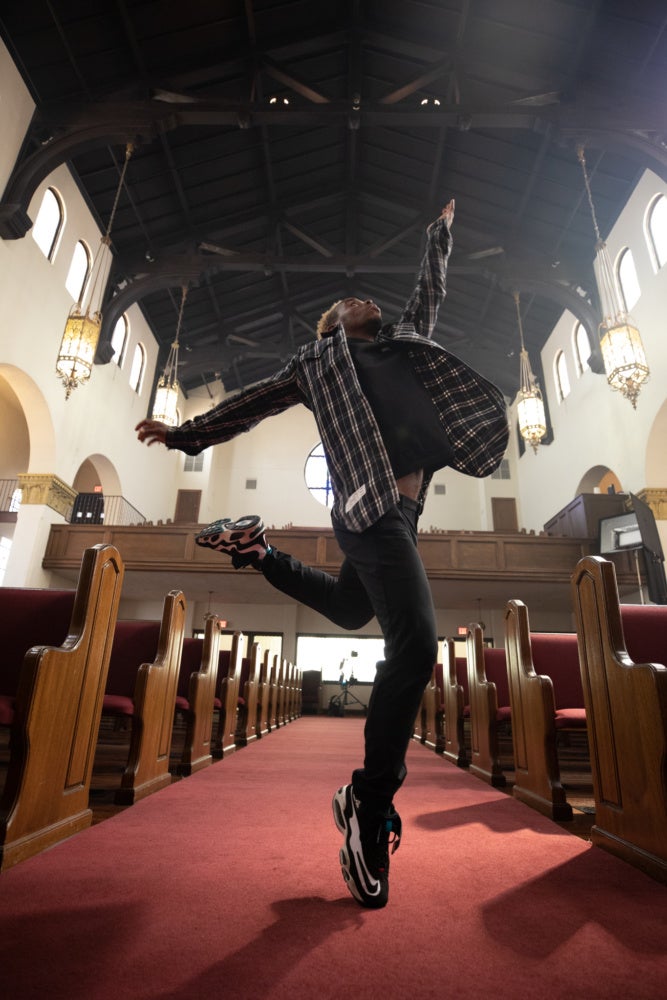
By the end of the film—when Lil Buck looks at the camera, self-aware and content—the phrase “nobody knows” is no longer a distress call. It has diverged from the somewhat demoralized meaning set forth by Pastor T.L. Barrett and the Youth for Christ Choir several decades ago. But it is still a message of surrender. There will be people who do not understand your struggle and are not willing to put in the effort to understand. But there will be many others who will support you, whether they can relate to you or not. Our load is lightened when we stop waiting for empathy from those who make no effort to extend it and instead pour our energy into healing with the support that already surrounds us.
Weeks after watching the film for the first time, the buoyancy of Nobody Knows lingers with me. I imagine the precarity of a high kick on a tiptoe. The tension of arms being pulled in opposite directions. The euphoria of a nearly weightless twirl. All bolstered by a chorus of Black voices. I’ve needed a celebration.
You can view Lil Buck’s short film Nobody Knows on Vimeo or YouTube.

